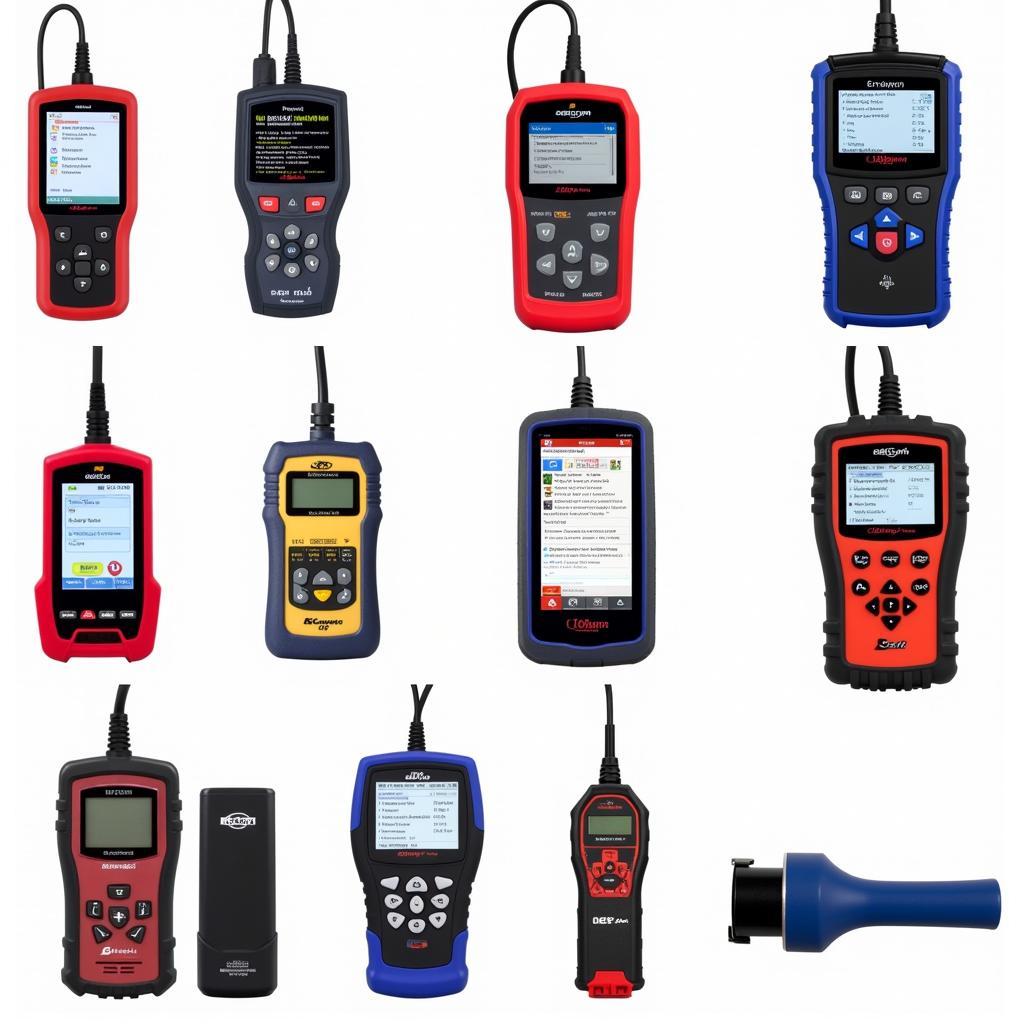In today’s tech-driven world, even our cars are becoming smarter. Gone are the days when a mechanic’s intuition was enough to diagnose a mysterious engine knock. Now, we have Plug In Car Diagnostic Tools – sophisticated devices that act as a window into your vehicle’s computer system, revealing hidden issues and empowering car owners and mechanics alike.
What is a Plug In Car Diagnostic Tool?
A plug in car diagnostic tool, also known as an OBD2 scanner, is a device that connects to your car’s On-Board Diagnostics II (OBD-II) port. This port, typically located under the dashboard on the driver’s side, acts as the communication hub for your car’s computer system. By plugging in a diagnostic tool, you can access a wealth of information about your vehicle’s health and performance.
Think of it like this: Your car’s computer is constantly monitoring various systems, from engine performance to emissions control. When an issue arises, it logs a Diagnostic Trouble Code (DTC) in its memory. A plug in car diagnostic tool acts as a translator, allowing you to read these DTCs and understand what they mean.
 Mechanic Diagnosing Car Issue
Mechanic Diagnosing Car Issue
Why You Need a Plug In Car Diagnostic Tool
Whether you’re a seasoned mechanic or a car enthusiast looking to get under the hood, a plug in car diagnostic tool can be an invaluable asset. Here’s why:
- Diagnose Car Problems: Identify the root cause of those pesky check engine lights, from minor sensor malfunctions to more serious engine problems.
- Reset Check Engine Light: After addressing the underlying issue, you can use the tool to reset the check engine light, saving yourself a trip to the mechanic.
- Monitor Car Performance: Track real-time data like engine RPM, coolant temperature, and fuel pressure, gaining insights into your car’s overall health.
- Save Money on Repairs: By diagnosing problems early on, you can avoid costly repairs down the line.
- Enhanced Understanding: Gain a deeper understanding of your vehicle’s inner workings, empowering you to make informed decisions about maintenance and repairs.
Choosing the Right Plug In Car Diagnostic Tool
The world of diagnostic vehicle interface tools offers a vast selection, from basic code readers to advanced professional-grade scanners. When choosing a tool, consider the following factors:
- Your Skill Level: If you’re a DIY enthusiast, a basic code reader might suffice. However, professional mechanics require more advanced tools with extensive diagnostic capabilities.
- Vehicle Compatibility: Ensure the tool you choose is compatible with your car’s make, model, and year.
- Features: Consider the features that are important to you, such as live data streaming, graphing capabilities, and the ability to read manufacturer-specific codes.
- Budget: Plug in car diagnostic tools range in price from affordable to quite expensive. Determine a budget that aligns with your needs and usage.
 Diagnostic Tool Options
Diagnostic Tool Options
Using a Plug In Car Diagnostic Tool
Using a plug in car diagnostic tool is generally straightforward. Most tools come with user-friendly interfaces and clear instructions. Here’s a basic overview of the process:
- Locate the OBD-II Port: This port is typically located under the dashboard on the driver’s side.
- Connect the Diagnostic Tool: Plug the tool into the OBD-II port.
- Turn on the Ignition: Turn the ignition to the “on” position without starting the engine.
- Access the Menu: Navigate the tool’s menu to access the desired functions, such as reading DTCs, viewing live data, or resetting the check engine light.
- Interpret the Results: The tool will display the DTCs or data in a clear format. Consult the tool’s manual or online resources to understand the meanings of the codes or data points.
A Word of Caution: While plug in car diagnostic tools are powerful tools, it’s important to remember that they don’t always provide the complete picture. If you’re unsure about a diagnosis or repair, it’s always best to consult a qualified mechanic.
Automation diagnostic tool and the Future of Car Repair
As cars become increasingly complex, so too will the tools we use to diagnose and repair them. The future of car repair is likely to involve even more sophisticated diagnostic tools with advanced capabilities, such as:
- Predictive Diagnostics: Imagine a tool that could predict potential problems before they even arise, allowing you to address them proactively.
- Wireless Connectivity: Diagnostic tools that connect wirelessly to your smartphone or tablet, providing you with instant access to vehicle data and remote diagnostics.
- Cloud-Based Data Analysis: Tools that leverage cloud computing to analyze vast amounts of vehicle data, identifying trends and potential issues with greater accuracy.
Conclusion
A plug in car diagnostic tool is no longer just a tool for mechanics – it’s becoming an essential tool for any car owner who wants to stay informed about their vehicle’s health and take control of their car maintenance. Whether you’re looking to diagnose a check engine light, monitor your car’s performance, or simply gain a deeper understanding of your vehicle, a plug in car diagnostic tool is a wise investment.
Need help choosing the right kindle for pc diagnostic tool or understanding your car’s diagnostic codes? Contact ScanToolUS at +1 (641) 206-8880 or visit our office at 1615 S Laramie Ave, Cicero, IL 60804, USA. We’re here to empower you with the knowledge and tools you need to keep your car running smoothly.

